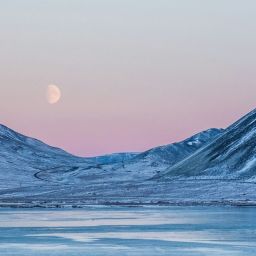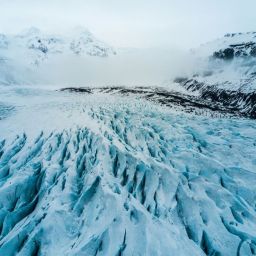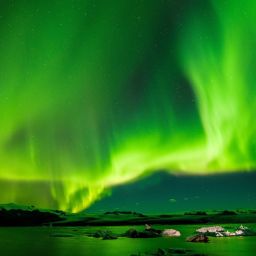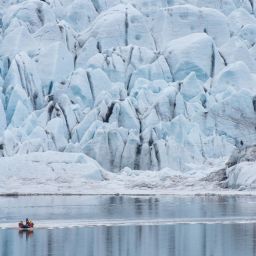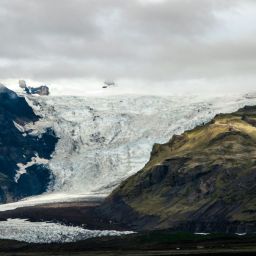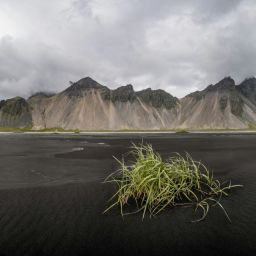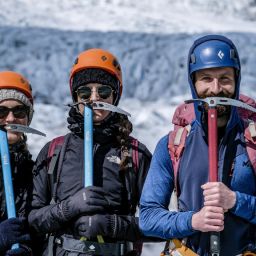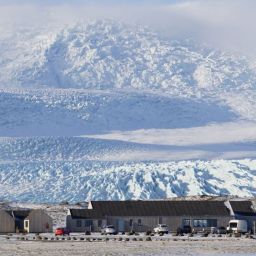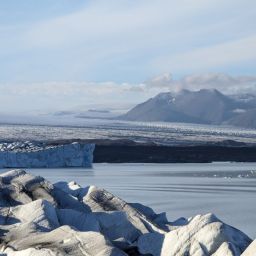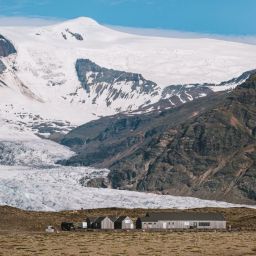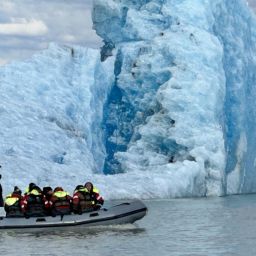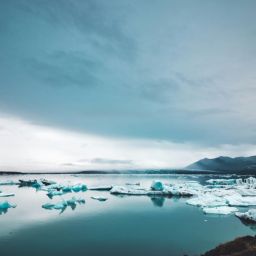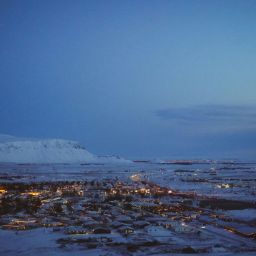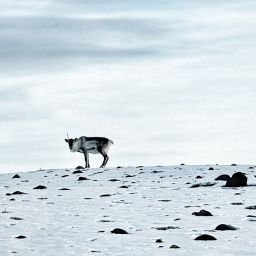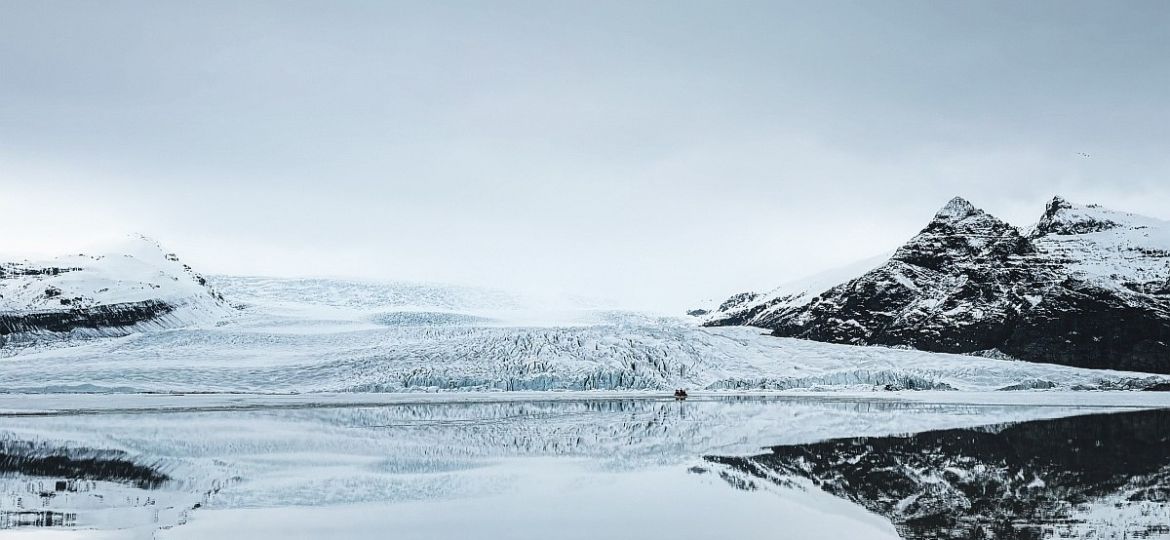
If you’re planning to do a road trip in Iceland, it’s highly likely you’ll find yourself driving through the scenic south region. In that case, you’ll want to spend some time on Iceland’s largest glacier, Vatnajökull – or its outlet glaciers – and experience at least one glacier lagoon. Fjallsárlón is a great choice if so, a tranquil lagoon with a striking backdrop of glacial ice. Let’s take a look at what it’s like to go there at different times of the year and what you should expect.
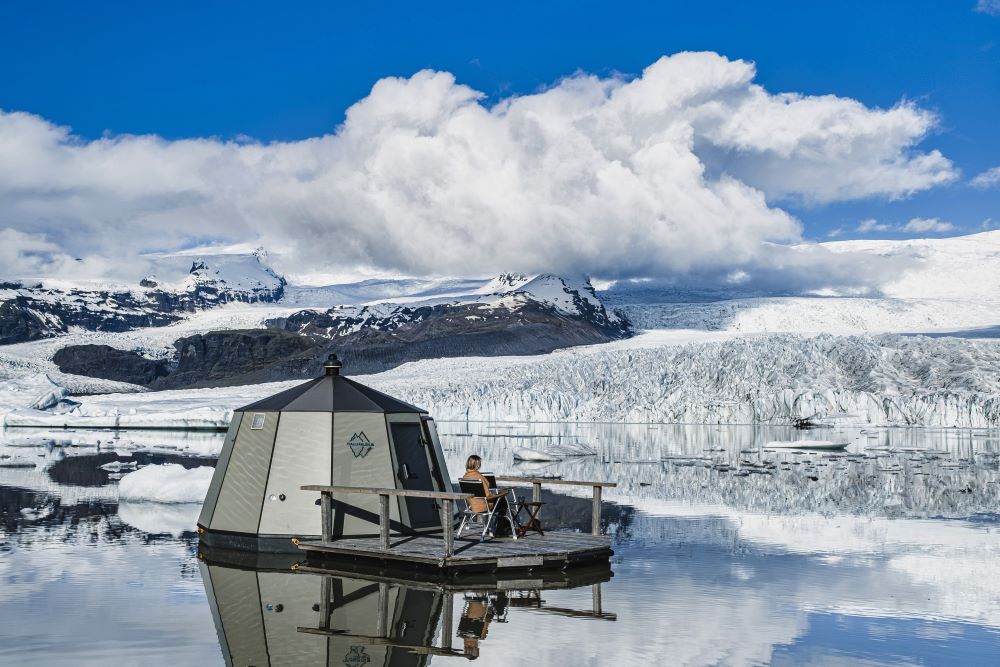
Summer at Fjallsarlon Glacier Lagoon
In summer, many visitors choose to take a boat trip on the lagoon. Zodiacs ferry passengers out onto the water for an up-close encounter with the icebergs that have calved from the Fjallsjökull glacier. Against a mountainous backdrop and close to the glacier’s tongue, it’s a magical place. And although it’s peak season, Fjallsárlón lagoon isn’t as crowded as nearby Jökulsárlón glacier lagoon, giving you space for reflection as you enjoy the best of the Icelandic weather.
For a truly memorable experience you can sleep out on the lake on an unforgettable overnight adventure. A specially designed retreat delivers on solitude, peace and quiet – an antidote from our stressful working life. A platform floats on the water, creating an idyllic spot for two where the accommodation features glass walls and a glass ceiling to make the most of the extraordinary location overlooking the glacier and the iceberg-strewn lagoon.
One of the big advantages of coming at this time of year is the extended periods of daylight. Whether you’re typically an early bird or a night owl it would still not be completely dark no matter when you came. Rock up late into the evening, for instance, and the soft light of the midnight sun catches on the icebergs and surface of the water, making them glitter and twinkle like diamonds. It really is an enchanting sight.
Winter at Fjallsarlon Glacier Lagoon
Then temperatures fall sufficiently, Fjallsárlón freezes over. Snow-capped peaks rise behind this lagoon and even the ice of the glacier might be covered with a dusting of snow and few icebergs stuck in the ice. Though strong winds and exposed, icy roads can be challenging for motorists, the ring road is rarely closed, and the place remains accessible year-round. Frost restaurant is open all year arohbftghtghftghtghthund so stop by for a warm soup or meal.
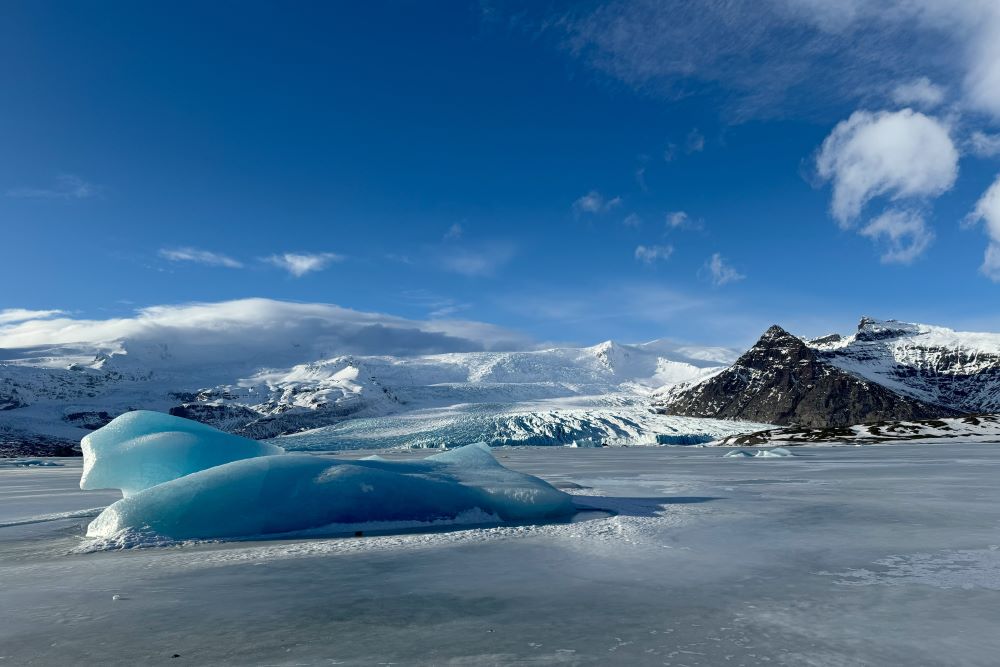
If you make it here on a cloudless day the winter sunlight makes this a magical place to be, bathing Fjallsárlón in a soft light that gives it a dreamy quality. Visitors can also capitalise on the lagoon’s proximity to Vatnajökull and book an ice cave tour. These dazzling underground caverns found in Breiðamerkurjökull Glacier are characterised by ice that is an intense blue. Step inside and the dimpled surface of the cave (incidentally caused by the ingress of water during the warmer months) adds an extraordinary dimension to an already jaw-dropping sight.
At night, you might also catch a glimpse of the Northern Lights here. You’ll need strong solar activity and cloudless skies, but if you’re lucky, the conditions will be perfect. In a place as dark as this, the aurora borealis can put on a breathtaking show as the colours of the aurora reflect in the lagoon and play off its icebergs. It’s astonishly beautiful.
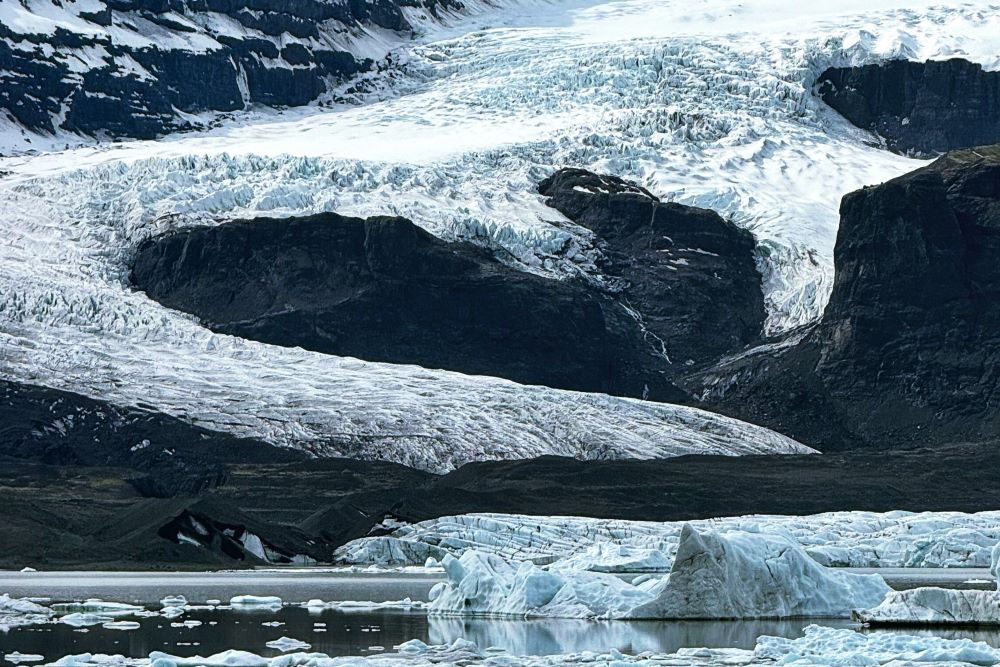
Spring and autumn at Fjallsarlon
Spring and autumn are the shoulder seasons effectively means that you can get the best of both summer and winter. Zodiac tours on Fjallsárlón begin in spring and continue well into autumn. Meanwhile, so long as the nights are dark enough, you still have a chance of spotting the Northern Lights well into April and also in September.
As you can see, there really is no bad time to visit Fjallsárlón glacier lagoon, so why not plan to incorporate it into your road trip itinerary?
Photos by Norbphoto – IG


